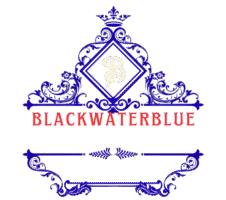Fashion designing is an ever-evolving art form that merges creativity with practical skill to create clothing and accessories that reflect personality, culture, and the spirit of the times. It is an industry that not only defines what people wear but also influences how they express themselves. The role of a fashion designer goes beyond simply crafting garments; it is about imagining styles that can inspire confidence, challenge norms, and sometimes even change societal perspectives.
At the heart of fashion designing lies the creative process. Designers often draw inspiration from various sources such as nature, history, art, or current social movements. This inspiration sparks ideas that are first translated into sketches. These initial drawings help designers visualize their concepts and lay the foundation for the entire collection. From there, fabric selection becomes crucial, as the material’s texture, weight, and color can dramatically affect the garment’s http://casinosaffiliates.co.uk/ final look and feel. Designers must understand the characteristics of different fabrics and how they interact with the human body to ensure both comfort and style.
Fashion is an industry that thrives on change and innovation. Trends continuously emerge, evolve, and sometimes fade away, reflecting the dynamic nature of society. Designers must stay ahead of these trends, balancing their unique vision with market demands. Recently, sustainability has taken center stage in the fashion world. With increasing awareness about environmental issues, many designers are now focusing on using eco-friendly materials and ethical production techniques. This shift not only impacts the design process but also the way consumers perceive fashion, encouraging more responsible choices.
Technology has transformed fashion designing, providing tools that enhance creativity and efficiency. Computer-aided design programs allow designers to experiment with patterns and colors digitally before committing to physical samples. Advances in textile technology have introduced innovative fabrics that offer new textures and functionalities. Furthermore, digital platforms and social media have revolutionized how designers showcase their work, allowing for instant global exposure and direct interaction with audiences. This connectivity has broadened opportunities for emerging designers, making fashion more accessible than ever before.
Despite its artistic nature, fashion designing also requires a solid understanding of business. Successful designers must grasp marketing, branding, and consumer behavior to thrive in a competitive market. Many start their careers by working with established brands to gain experience and insights before launching their own labels. Building a brand demands consistency, originality, and the ability to adapt to changing market conditions. It is a delicate balance between creative expression and commercial viability.
Education and training form the backbone of a designer’s development. Fashion schools provide essential skills in sewing, pattern making, draping, and fashion history. However, passion and perseverance often play an even larger role in determining success. The fashion industry is fast-paced and demanding, rewarding those who are innovative and resilient. Every season brings new challenges and opportunities to push creative boundaries.
Fashion designing holds great cultural significance as it shapes societal norms and personal identities. Designers influence how people see themselves and each other, creating garments that can empower, inspire, or provoke thought. It is a form of expression that transcends mere clothing, embodying ideas and emotions.
In conclusion, fashion designing is a rich and multifaceted discipline that combines creativity, technology, and business acumen. It offers a rewarding career path for those passionate about innovation and self-expression. The world of fashion is constantly changing, and designers play a vital role in shaping the way we dress and perceive the world around us.
